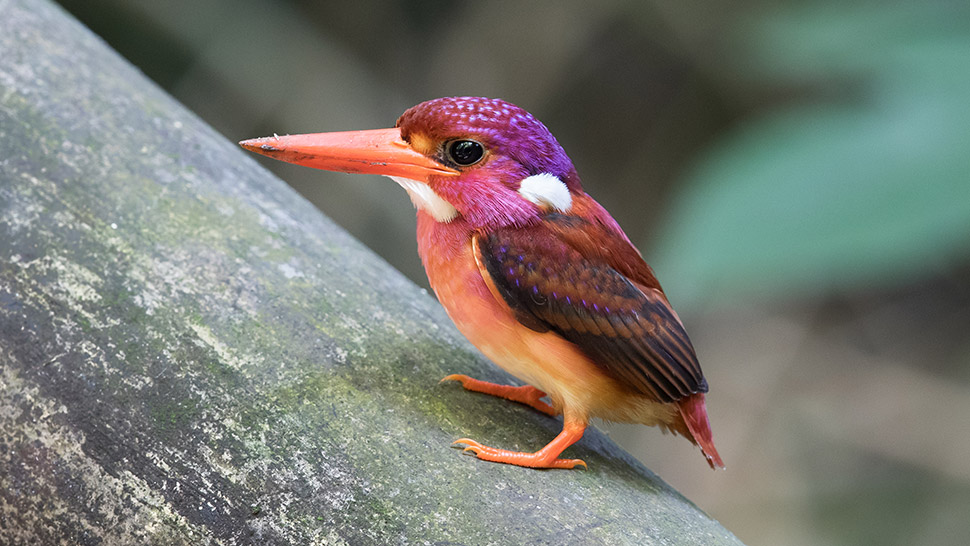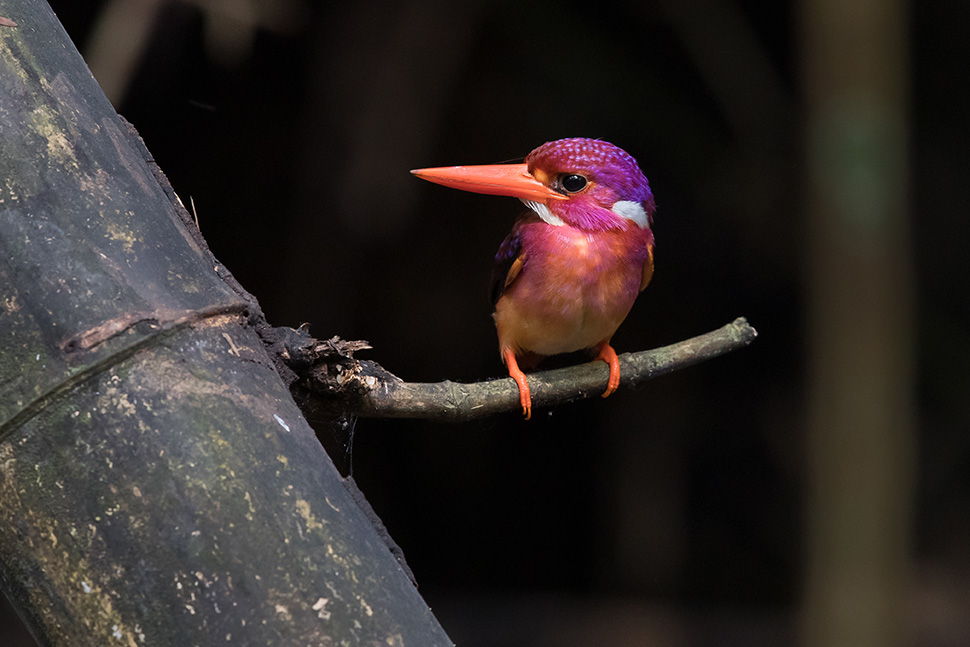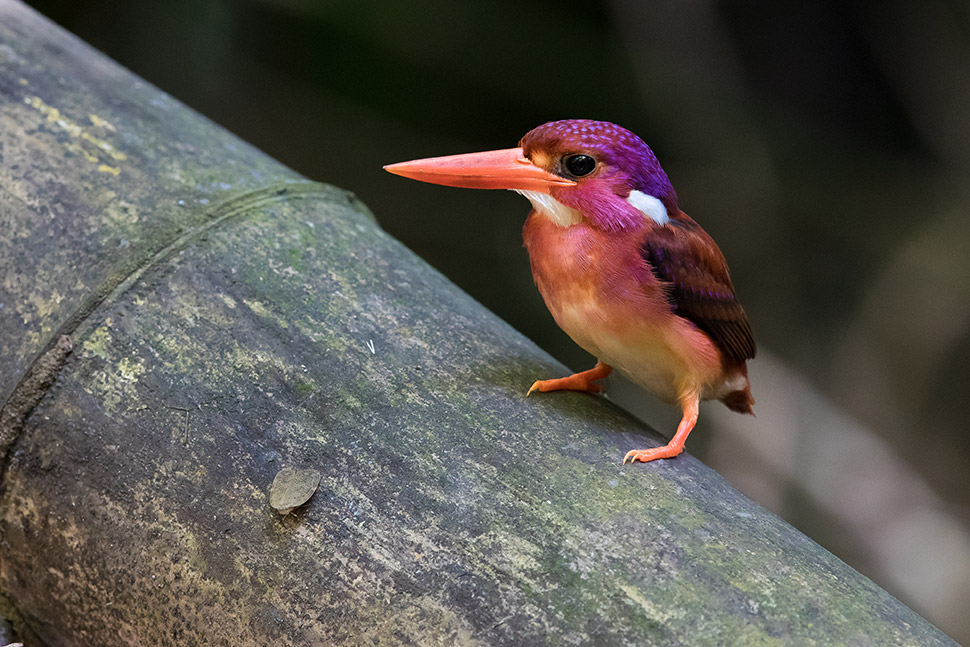Ultra-Rare Dwarf Kingfisher Fledgling Photographed for the Very First Time

The South Philippine Dwarf Kingfisher (Ceyx mindanensis) was first described 130 years ago during the Steere Expedition to the Philippines in 1890.
The bird is the tiniest species of forest kingfisher in the Philippines, and is characterized by its striking plumage of metallic lilac, orange, and bright blue spots.
It is found in the virgin and second-growth forests in the islands of Mindanao and Basilan. The South Philippine Dwarf Kingfisher has a unique call, described as a “high-pitched, insect-like, and almost inaudible zeeep.”
It has eluded scientists for over a hundred years because of its behavior. It is difficult to see as it perches quietly and darts invisibly from perch to perch.
But thanks to Miguel David De Leon, a Filipino field biologist and director of the Robert S. Kennedy Bird Conservancy, we get a glimpse of the beautiful bird that is sadly threatened with extinction.
"The Robert S. Kennedy Bird Conservancy is a group of eight field workers and bird photographers that documents birds and habitats, contributing data previously unknown to science, with the ultimate goal of conserving species and ecosystems," says De Leon in an interview with Esquire Philippines.
"We focus on poorly known birds and document their biology and ecology or how they interact with other organisms in their habitat," he adds.
Photographed for the First Time
The following photos of the bird's fledgling taken by De Leon have never been published, and this will be the first time most Filipinos will get to see the rare species.
The photos are results of De Leon and his team’s 10 years of laborious tracking and research in an attempt to document for the first time the nesting, feeding, and breeding behaviors of the South Philippine Dwarf Kingfisher.








Nest Sites Discovered
De Leon and his team of biologists traveled to forests in Cagayan de Oro and conducted research from 2007 to 2017. At Mapawa Nature Park, they found two nesting sites of the South Philippine Dwarf Kingfisher. Unfortunately, the first nesting site was destroyed by trespassers before any scientific observations could be made.
The second nesting site was untouched. They found it three meters above the forest floor, attached to a tree trunk. The dwarf kingfishers are cavity nesters, meaning they excavate nest holes in earth banks and termite nests called termitaria.
The species feeds on a variety of small creatures including earthworms, small lizards, and other invertebrates.
Threats to the South Philippine Dwarf Kingfisher's Survival
Habitat destruction, poaching, and climate change are the greatest threats to the survival of the South Philippine Dwarf Kingfisher.
According to De Leon, there is more to conservation than just forest and trees.
"There’s more to bird conservation than just birds. By protecting and preserving habitats, we keep the circles of life within an ecosystem intact. The innumerable variety of insects that birds feed on, the unattractive shrubs that insects feed on, the fungi and bacteria that render the soil suitable for plant growth, and so on, they’re all indivisibly linked together."
"The biggest threat to the decline or loss of our endemic and indigenous species is habitat loss. Hunting and trapping for food or the illegal pet trade are contributory factors as well. Culturally, recreational shooting of birds using airguns or slingshots puts further pressure on bird populations," says De Leon.




